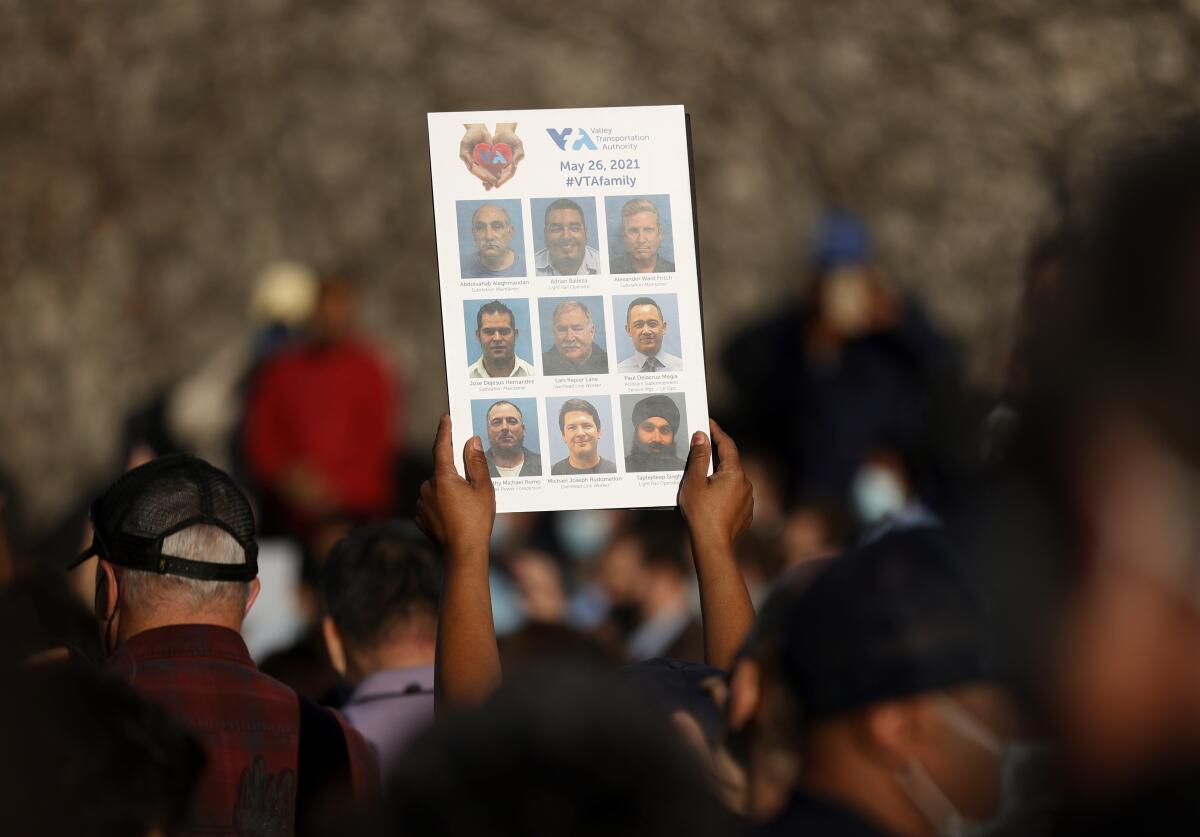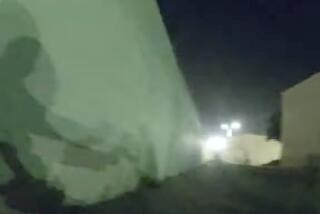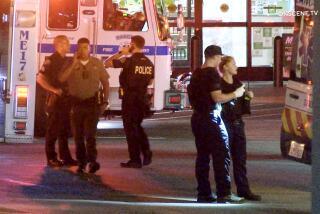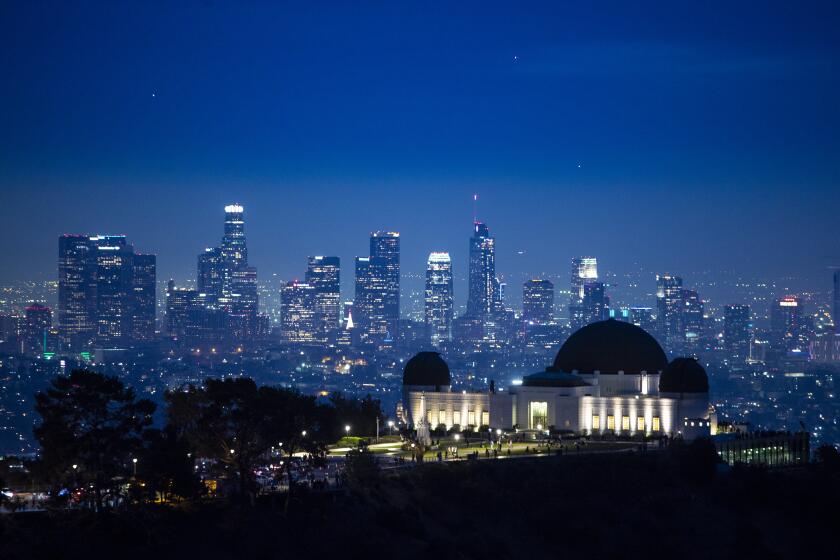Deputy body-camera footage shows initial response to San Jose mass shooting

- Share via
Body-camera video from a Santa Clara County sheriff’s deputy shows the first law enforcement team that entered a San Jose light rail yard to locate the gunman who took the lives of nine people last Wednesday.
The footage, released Tuesday evening by the sheriff’s office, follows a team that consisted of a sheriff’s sergeant, a deputy and three San Jose police officers, Lt. Aaron Simonson said during a media briefing.
Deputies were dispatched to the Valley Transportation Authority’s rail yard at 6:35 a.m., a minute after the first 911 call came in. The yard is located in a cluster of public buildings, including the San Jose Police Department and the Santa Clara Sheriff’s Department.
At 6:38 a.m., deputies heard shots fired, and officials formed a team to find the gunman. A VTA worker told deputies the shooter was armed with a handgun and was last seen in a building, Simonson said.
The video shows members of the team, with guns outstretched, moving up the building’s exterior stairwell leading to the third floor. The sheriff’s officials went first since they were armed with patrol rifles, Simonson said.
As the team reaches the top of the stairs, a police officer says he had heard through dispatch that shots were being fired. Shots cannot be heard on the video footage.
Seconds later, a VTA supervisor exits a door leading to the stairwell. After slowly moving backward with his hands in the air, he provides officials with his key card to allow them to access the building.
At 6:43 a.m., the team enters the third floor and walks through a dispatch center, searching for victims, people who are hiding or suspects. As they move through rooms, three gunshots can be heard.
Through a door with a window, officials spot a man — later identified as the assailant — sitting in a chair with his head down, holding a gun. He doesn’t appear to be moving.
After approaching the man, the team continues looking for victims.
Santa Clara County Sheriff Laurie Smith said that after the 1999 Columbine High School shooting in Colorado, the agency changed its tactics so that law enforcement does not wait for a SWAT team to arrive and will “immediately go in.”
“This protocol, I believe, saved lives,” Smith said. “There were over 100 people in that area. He had a lot of additional ammunition.”
Smith believes that the gunman, 57-year-old Samuel Cassidy — who has been described as a disgruntled VTA worker who hated his job — heard the officials walking through the building or saw their flashlights.
On Tuesday, the Santa Clara County’s Office of the Medical-Examiner Coroner confirmed that Cassidy died by suicide from multiple gunshots to the head.
The nature of the attack was deliberate and targeted, the investigation revealed. Witnesses have said Cassidy appeared to pass over some people while selecting others to shoot.
Authorities have said a search of his house — which was burned in a fire that coincided with Wednesday’s shooting — uncovered multiple cans of gasoline, Molotov cocktails, 12 firearms and about 25,000 rounds of various types of ammunition.
Bomb-sniffing dogs at the rail yard found bomb-making materials in what is presumed to be Cassidy’s locker, including detonator cords and the “precursors to an explosive,” according to Smith.
A Department of Homeland Security memo indicated that Cassidy had been detained by U.S. Customs Service in 2016 while returning from the Philippines and had been found to profess “a hatred of his workplace,” as first reported in the Wall Street Journal.
Smith said the investigation into a motive behind the shooting is ongoing.
“It’s something we don’t know,” she said. “We’ve talked to hundreds of witnesses and are putting it together now.”
Times reporters Hayley Smith and Richard Winton contributed to this report.
More to Read
Sign up for Essential California
The most important California stories and recommendations in your inbox every morning.
You may occasionally receive promotional content from the Los Angeles Times.











